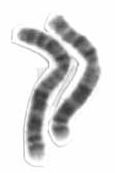
Photo from wikipedia
Soy sauce secondary precipitate formed due to the B3 subunit seriously affects soy sauce's appearance quality. In this study, a prolyl endopeptidase (APE) from Aspergillus niger, which could degrade approximately… Click to show full abstract
Soy sauce secondary precipitate formed due to the B3 subunit seriously affects soy sauce's appearance quality. In this study, a prolyl endopeptidase (APE) from Aspergillus niger, which could degrade approximately 50% of the B3 subunit and increase proline content by 24% in soy sauce, was isolated and identified. The results showed that APE was an acidic salt-tolerant serine protease (62 kDa), which was optimally active at 40 °C and pH 4.0, and retained more than 69% activity in 3 M NaCl solution over 10 days. As a potential substrate of APE, the B3 subunit contains 10 proline residues. High salinity could not damage the hydrogen bonds, salt bridges, and interior hydrophobicity of APE; thus, the spatial structures and activity of APE in 3 M NaCl solution were stable within 3 days and decreased thereafter. High salinity made the B3 subunit more rigid and lowered the catalytic activity of APE on the B3 subunit, hindering complete hydrolysis of the B3 subunit. This was the first report about the APE capable of degrading the B3 subunit and reducing the secondary precipitate of soy sauce, providing a new possibility to solve the secondary precipitate of soy sauce.
Journal Title: Journal of agricultural and food chemistry
Year Published: 2022
Link to full text (if available)
Share on Social Media: Sign Up to like & get
recommendations!